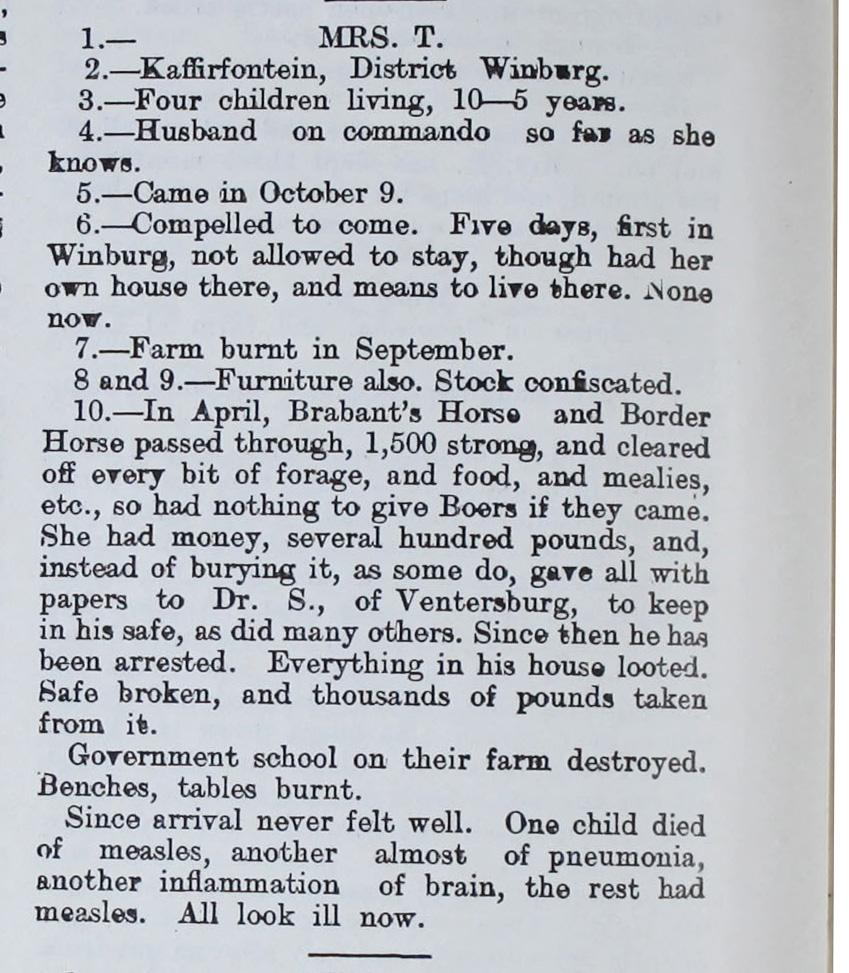
1 – MRS. T.
2 – Kaffirfontein, District Winburg.
3 – Four children living, 10-5 years.
4 – Husband on commando so far as she knows.
5 – Came in October 9.
6 – Compelled to come. Five days, first in Winburg, not allowed to stay, though had her own house there, and means to live there. None now.
7 – Farm burnt in September.
8 and 9 – Furniture also. Stock confiscated.
10 – In April, Brabant’s Horse and Border Horse passed through, 1,500 strong, and cleared off every bit of forage [food for livestock] and food, and mealies [maize plant] etc., so had nothing to give Boers if they came. She had money, several hundred pounds, and, instead of burying it, as some do, gave all with papers to Dr. S., of Ventersburg, to keep in his safe, as did many others. Since then he has been arrested. Everything in his house looted. Safe broken, and thousands of pounds taken from it. Government school on their farm destroyed. Benches, tables burnt. Since arrival never felt well. One child died of measles, another almost of pneumonia, another inflammation of brain, the rest had measles. All look ill now.
Look at Source 8.
Extracts 8a-d from a report ‘To the Committee of the Distress for South African Women and Children’, compiled and written by Emily Hobhouse to investigate the mistreatment of those held in British camps, which includes reports and letters after visiting many of them, 1901, Catalogue ref: WO 32/8061
The latter stages of the war had descended into guerrilla warfare, and refugee camps had initially been set up to shelter civilian families. The British policy, under Lord Kitchener, of burning farms and homesteads to prevent the Boers from accessing supplies soon resulted in an influx of civilians into these ‘concentration camps’ or refugee camps. In total, forty-five camps were built for Boer internees, and an additional sixty-four were built for black Africans. It is estimated that 26,000 Boer women and children died, as well as over 14,000 black inmates, mainly as a result of disease and malnutrition.
- What do these extracts reveal about living conditions in these camps?
Read again those extracts which relate to individuals/families in camps. Explain the following:
- Why were they brought to the camp?
- What had they done?
- Were other members of their family directly involved in the war in some way?
- What was the state of their health whilst in the camp?
- How does this system of ‘concentration camps’ represent a war against civilians?
- What can be inferred about the impact of the war against the civilians of South Africa in terms of (a) its economy (b) its population (c) Boer fighters?
